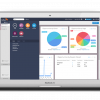Test Planning
Articles
 |
Test Faster: How We Cut Our Test Cycle Time in Half In just a year, one test team reduced its test cycle by more than 50 percent. It took analysis, planning, and effort—first they looked into how they spent their time, and then they questioned whether they could reduce time in any of those areas. Once they knew where they could be more efficient, they could start tackling their blockers. Here's how you can, too. |
|
 |
Getting Your New Web Test Automation Up and Running So you have the responsibility of a new team and getting an entirely new web automation test infrastructure up and running. Here are the hurdles, pitfalls, and successes one QA director encountered, along with the milestones the team defined to measure success, how they migrated their existing manual tests, and the path they took to establish the new web test automation initiative. |
|
 |
7 Ways Monitoring Can Help You Be a Better Tester Monitoring makes your testing work easier, helps you manage certain biases you may have, and lets you learn a lot about the product, users, and even your own processes. Here are seven concrete benefits testers get from monitored data that you can use to convince your team to implement monitoring—as well as realize for yourself. |
|
 |
Teaching Acceptance Test-Driven Development Acceptance test-driven development is a whole-delivery cycle method that allows the entire team to define system behavior in specific terms before coding begins. These conversations align the expectations of the testers, developers, and product owners, forcing any silly arguments to happen before someone has to create the code twice. Here are some great beginner exercises for teaching ATDD. |
|
 |
Reporting Automated Test Results Effectively The modern iterative software development lifecycle has developers checking in code to version control systems frequently, with continuous integration handling building and running automated tests at an almost equally fast rate. This can generate an enormous amount of test data. Here’s how you can ensure you are reporting results effectively across your team and realizing all the benefits of that information. |
|
 |
5 Ways to Optimize Tests for Continuous Integration Many teams have existing automated test suites that are not included in a continuous integration program. Maybe the tests take too long to execute, or they are not reliable enough to give accurate results. Here’s how to assess your test suites in terms of value added and time to execute, along with five proven strategies to optimize those suites for CI. |
|
 |
Measuring the Performance of Your Operations Center Many organizations have problems with consistently tracking and measuring system outages. Issues aren't logged, admins make changes to systems without going through change management, and a high number of issues turn out to be recurring problems. Implementing a performance measurement process calculates system reliability and can help you improve consistency. |
|
 |
How Much of Debugging Software Is a Tester’s Responsibility? Everyone knows a tester's job is to help improve the quality of the software under test. But it gets a little murky when you try to define the boundary between testing and debugging. There's no clear delineation: Some testers would state how to reproduce the bug, write the report, and hand it off, while others learn the code, find the root cause, and even create builds to fix the bugs. How much is useful, and how much is too much? |
|
 |
Testing to the Usability Standards Our Customers Expect Allowing minor defects to be included in releases impacts our customers’ perspective on software professionalism. We’ll never catch every weird, obscure bug, but there are some design elements where they tend to lurk. By focusing our testing efforts on these areas—or at least not neglecting them—we can catch more issues before our customers do. |
|
 |
Lessons Learned in Testing CRM Software CRM systems manage a company’s business relationships, including customers’ data, information, and interactions, so there’s a lot that can—and should—be tested. Viktar Sachuk talks about his experience in testing CRMs to provide some tips for dealing with the trickiest parts of CRM testing, specifically focusing on some preparatory measures, functional testing, integration testing, and test automation. |
Pages
Recommended Web Seminars
| May 23 | How Generative AI Boosts Speed and Quality in Software Testing |
| On Demand | Building Confidence in Your Automation |
| On Demand | Leveraging Open Source Tools for DevSecOps |
| On Demand | Five Reasons Why Agile Isn't Working |
| On Demand | Building a Stellar Team |










